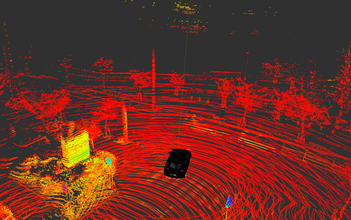Virtualization Technology in Automotive
It is a well-accepted fact that in the future of the automotive industry — autonomous driving, connectivity, and mobility — the role of software is going to increase exponentially. We are also witnessing an increase in the software complexity and the number of components in automotive.
At present, the approach of vehicle system designing is towards modularized vehicle control system where the software subsystems are distributed across multiple control units but it is widely believed that the future of the automotive industry will be more towards centralized vehicle architecture.
The centralized architecture has advantages like it can save development cost as well as enable faster communication and computation power but it requires integration of hardware and software components of different automotive safety integrity levels.
There are standards like AUTOSAR available that provide flexibility in integrating different software components but they also have disadvantages as they compromise on isolation from software interference.
In this line, Virtualization has emerged as a technique which can handle the upcoming innovations, increasing complexity and the requirement of computation power in automotive.
Virtualization is not a new concept and it is being used for several decades in server domains, ensuring integration of heterogeneous subsystems without interference. With the increased usage of faster multicore chips in the automotive industry, the scope of implementation of virtualization has increased.
Virtualization is achieved through an introduction of a software layer termed as Hypervisor or Virtual Machine Monitor into the system that creates and runs virtual machines that can host operating systems like Linux and Android, and also real-time operating systems such as AUTOSAR etc. It makes it possible to run functions with different requirements regarding real-time behavior and functional safety simultaneously on a single SoC.
It also creates virtual software containers, such that any hiccup or breach in a single car functional domain can be isolated and does not impact or create vulnerabilities in other domains of the car. With Hypervisor each of these two systems is isolated and kept safe, so that for example if the infotainment system were to crash, it would not take the safety-critical systems down with it.
There are a number of companies that have launched such products for the automotive industry. BlackBerry has launched QNX Hypervisor 2.0 based on its SDP 7.0. It enables developers to partition and isolate safety-critical environments from non-safety critical environments, ensuring that no critical systems are put at risk.
Another company Mentor Graphics Corporation also has a product named Mentor® Embedded Hypervisor for in-vehicle infotainment (IVI) systems, telematics, advanced driver assistance systems (ADAS) and instrumentation.
Renesas Electronics Corporation, a supplier of advanced semiconductor solutions, has also announced software packages for the R-Car automotive computing platform implement embedded optimized virtualization technology.
Green Hills software also has a product INTEGRITY Multivisor which the company claims to be the most powerful, reliable, and flexible embedded virtualization solution.
The Automotive Grade Linux project has also unveiled a virtualization framework for its Linux-based automotive distribution that aims to provide a flexible, mixed criticality bus architecture to plug in multiple existing hypervisors and partitioners.
There are also other companies that have launched products that revolve around this technology and many are in the process of launching.




